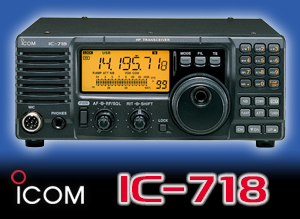Propagation News – 28 July 2024
We had yet another week of high sunspot numbers and low geomagnetic disturbances, but will it last?
We dodged a bullet last week after a weak coronal mass ejection, or CME, on Tuesday 23 August failed to generate a geomagnetic storm. This was from a faint halo CME observed on Sunday, which was much weaker than expected when it hit Earth.
A further M2.4 flare, near the eastern limb on Tuesday, produced a coronal mass ejection, but that was directed away from Earth.
So, we ended the week with a Kp index that never rose above 2, despite up to 19 M-class solar flares occurring. Our luck must run out some time!
The main HF DX this week has been the K8R DXpedition on American Samoa. This has been workable on all bands from 20 to 10m, especially using FT8. They have been trialling a new Super Fox mode on FT8. If you are interested in using this mode, you will need the latest version of the WSJT-X software.
Daylight maximum usable frequencies, or MUFs, over a 3,000km path have reached more than 24MHz, with 28MHz available at times on some paths. This will, no doubt, improve as we head towards the autumn.
Night time MUFs over a similar path length have exceeded 14MHz, and often reached 18MHz at times. Make the most of the night time openings as they will die off as we head towards the end of the summer.
Next week, NOAA predicts the solar flux index will be in the range of 165 to 175 and the Kp index will be a maximum of 2 all week. As ever, this will be dependent on any solar flares and associated CMEs. A CME could easily push the Kp index up and the MUF down.
Four sunspot groups have just rotated into view so keep a close eye on them on solarham.com At least one is classed as “growing” and could be a contender for trouble over the next week by way of solar flares and CMEs.
The area of high pressure which develops over this weekend will bring the prospect of Tropo conditions at the start of the new week.
The high will drift slowly east towards Denmark by midweek but could still provide the chance of Tropo conditions across the North Sea until Wednesday.
Meanwhile, a weather front will reach northwest Scotland on Monday and edge slowly south whilst a small thundery low develops near the southwest of Britain. This combination will bring a gradual transition to more unsettled weather with a chance of rain scatter on the GHz bands for the second half of the week.
The Delta Aquariid meteor shower is active from the 12 July to the 23 August. With no noticeable peak, it is expected to reach its maximum rate of 25 per hour on or around the 30 July.
We should have more than just random meteors to use for meteor scatter operation, so it’s worth trying meteor scatter on the VHF bands. Also, given clear skies and darkness over the next few weeks, it’s worth having a look out for them with the naked eye or photographically.
This extra input of meteors may well improve the prospects for Sporadic-E, which have perhaps seemed a little less than enthusiastic recently. Meteor debris from meteor showers, or random meteors, provides the fuel for Sporadic-E. These ionised trails in the E region above 100km can be affected by wave motion caused by jet streams much lower down at around 10km.
Fortunately, there are a number of useful jet streams on the forecast charts for next week with a slight preference for paths to Scandinavia and eastern Europe.
Moon declination is positive and rising, reaching maximum on Thursday the 1 August, so Moon windows are long with high peak Moon elevation. We passed perigee on the 24 July so path losses are on the increase. 144MHz sky noise is low to moderate all week.
Category: GB2RS Propagation News











